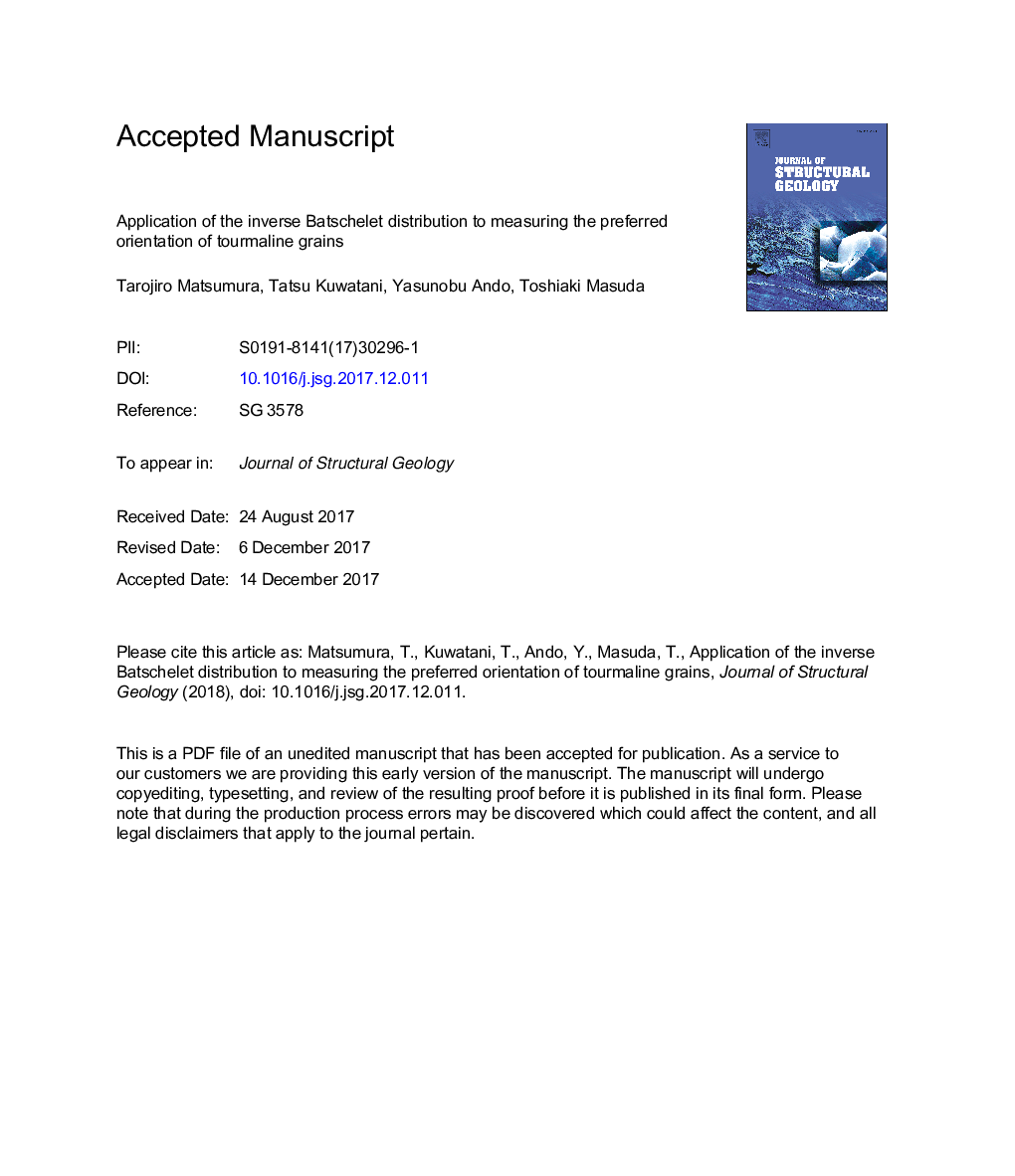| Article ID | Journal | Published Year | Pages | File Type |
|---|---|---|---|---|
| 10120762 | Journal of Structural Geology | 2018 | 23 Pages |
Abstract
We have used the inverse Batschelet distribution to perform a statistical analysis of mineral lineation defined by the preferred orientation of tourmaline grains on a foliation surface. Orientation data for 542, 617, 3202, and 3621 tourmaline grains from four metachert specimens were characterized by the parameters ξ, κ, ν, and λ, representing the location, concentration, skewness, and peakedness of the distribution, respectively. The inverse Batschelet distribution can be represented by either one full model or one of three sub-models, which comprise varying combinations of the adopted parameters. These are the full four-parameter family model and its skew-von Mises (λâ¯=â¯0), symmetric (νâ¯=â¯0), and von Mises (λâ¯=â¯0 and νâ¯=â¯0) sub-models. Statistical analysis reveals that the full four-parameter family, and symmetric models best represent our orientation data. We conclude that the inverse Batschelet distribution is a useful analytical technique, having three important advantages over alternative approaches: (1) the orientation of a mineral lineation is represented by the mode of the data, defined as half of ξ - 2ν; (2) the degree of symmetry of the orientation data is represented by ν; and (3) the strength of the preferred orientation can be quantified by κ and λ.
Keywords
Related Topics
Physical Sciences and Engineering
Earth and Planetary Sciences
Geology
Authors
Tarojiro Matsumura, Tatsu Kuwatani, Yasunobu Ando, Toshiaki Masuda,
